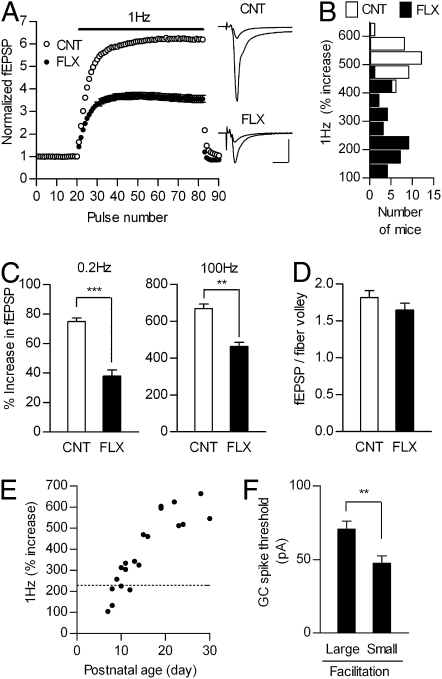Fig. 3.
Chronic fluoxetine reduces mossy fiber synaptic facilitation to juvenile level. (A) Pooled data showing marked reduction of 1 Hz frequency facilitation at the MF synapse in fluoxetine-treated mice (CNT, n = 30; FLX, n = 35; see Fig. S5A for statistics). Sample recordings are averages of 15 consecutive fEPSPs during baseline and 1 Hz stimulation. (Scale bars: 10 ms and 0.5 mV.) (B) A histogram of magnitude of facilitation at 1 Hz. (C) Reduced frequency facilitation at 0.2 Hz (n = 14 each, P < 0.0001) and 100 Hz (n = 8 each, P = 0.0022). (D) No significant difference in ratios of fEPSP to fiber volley amplitude (CNT, n = 18; FLX, n = 20). (E) Developmental increases in magnitude of 1 Hz facilitation. Each symbol represents a single mouse. The dotted line shows the median value in adult fluoxetine-treated mice. (F) Higher GC excitability in mice with smaller synaptic facilitation. Fluoxetine-treated mice were divided into two groups (five mice each) by order of magnitude of 1 Hz facilitation, and the threshold current for GC spike generation was compared (large, n = 19 cells; small, n = 16 cells; P = 0.0093). Data are presented as mean ± SEM.

